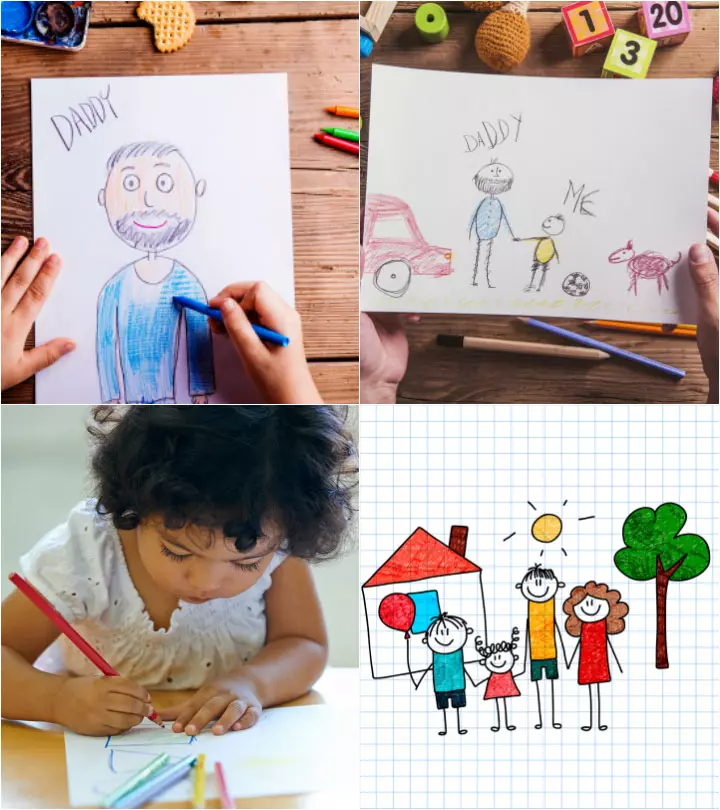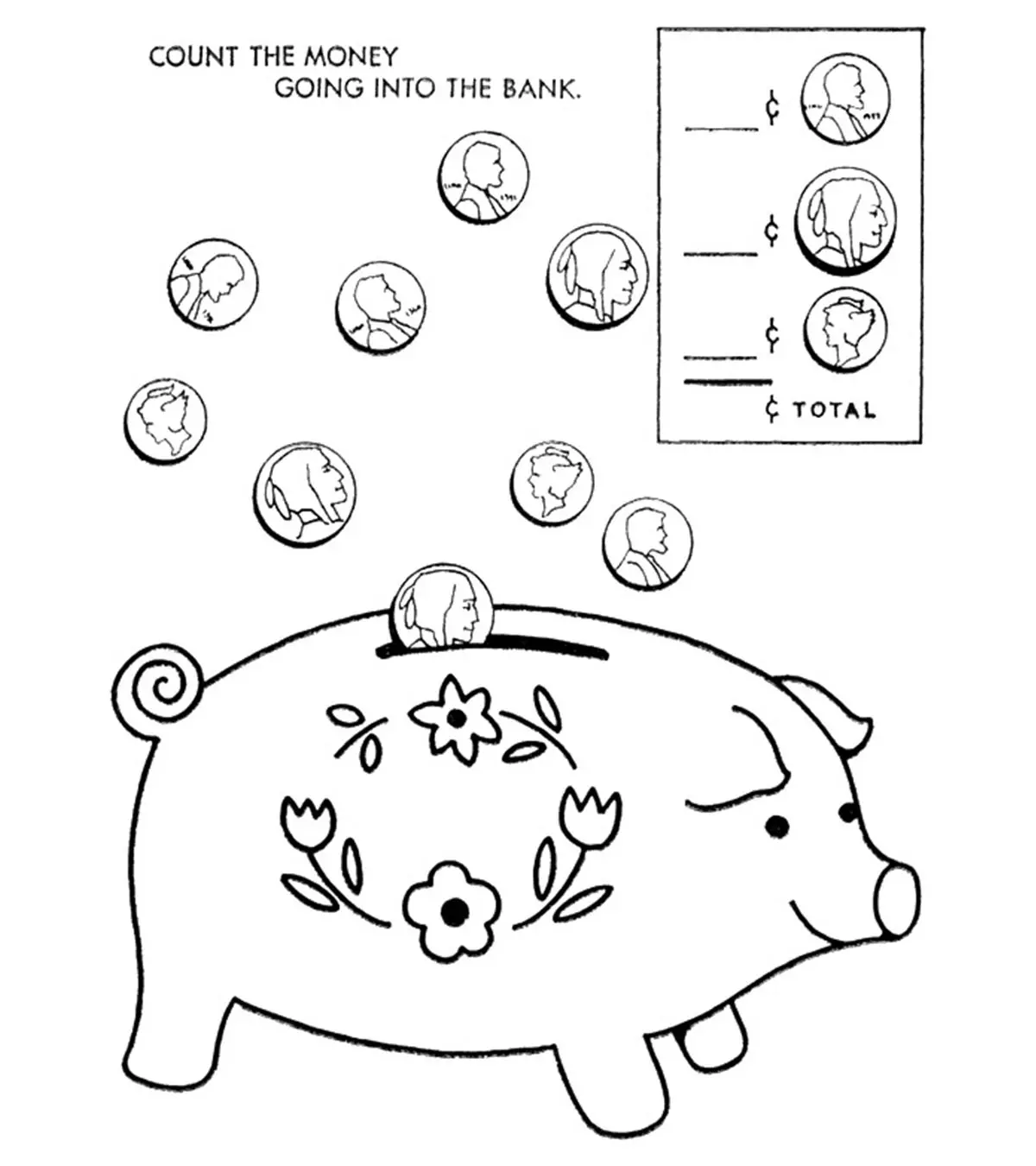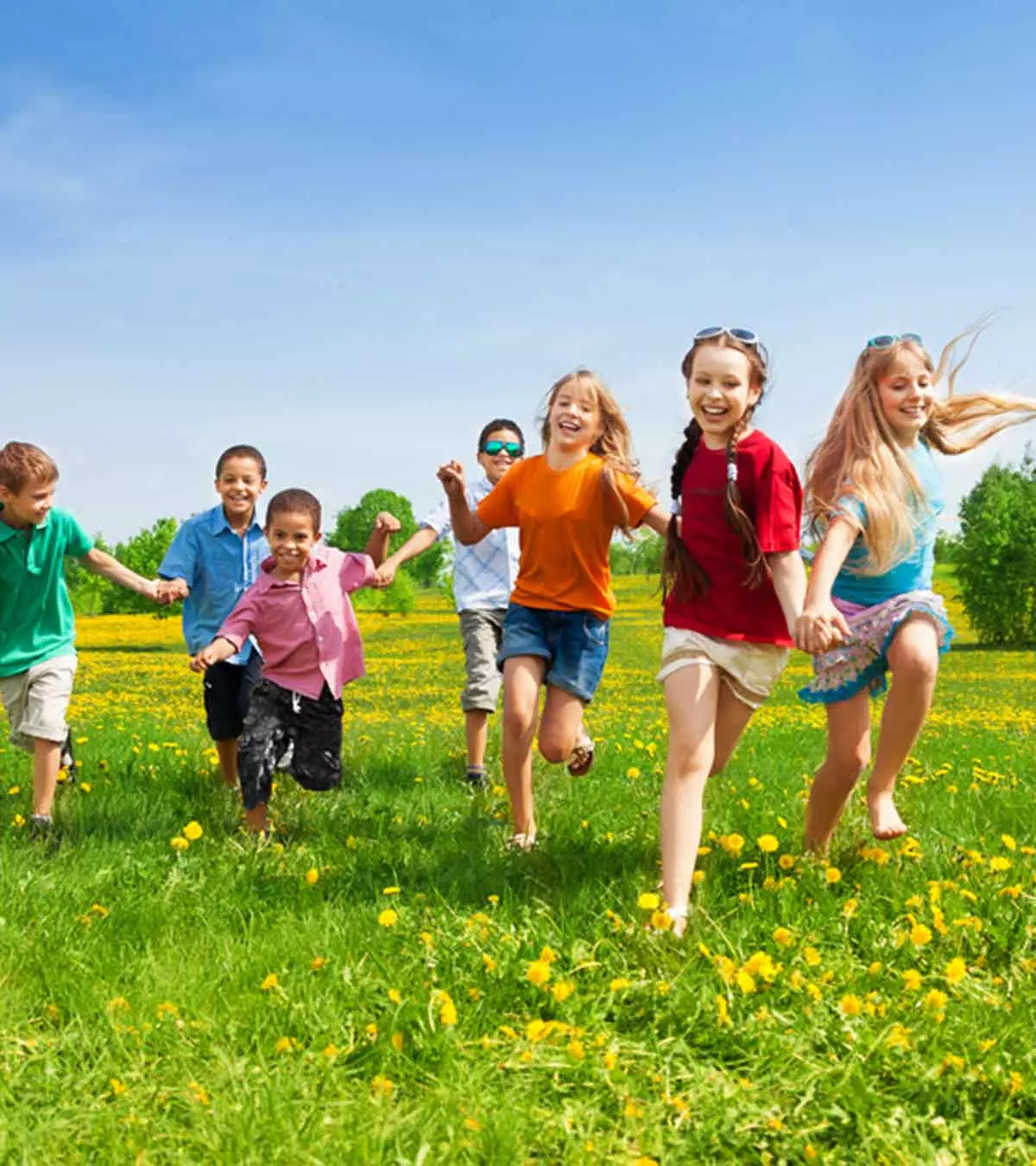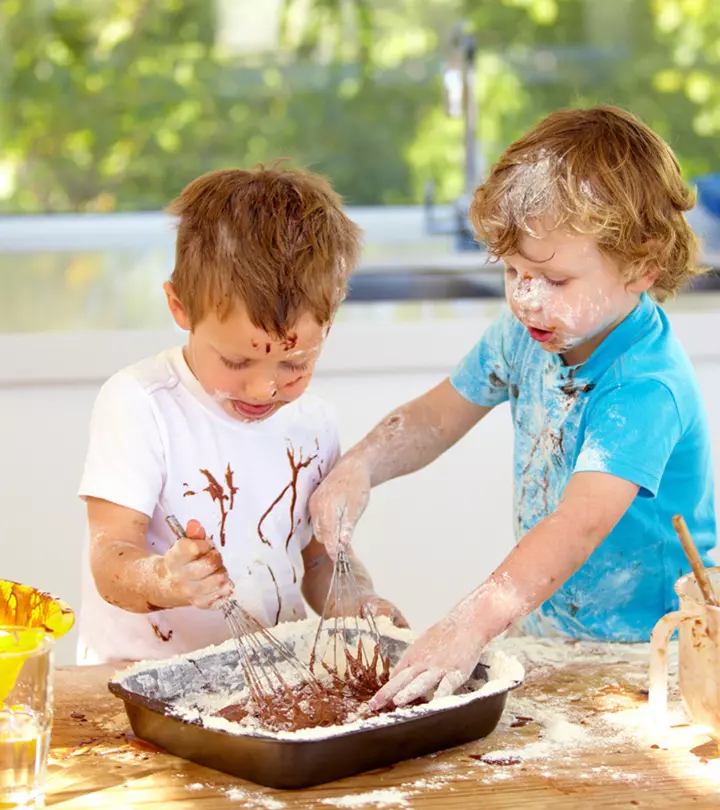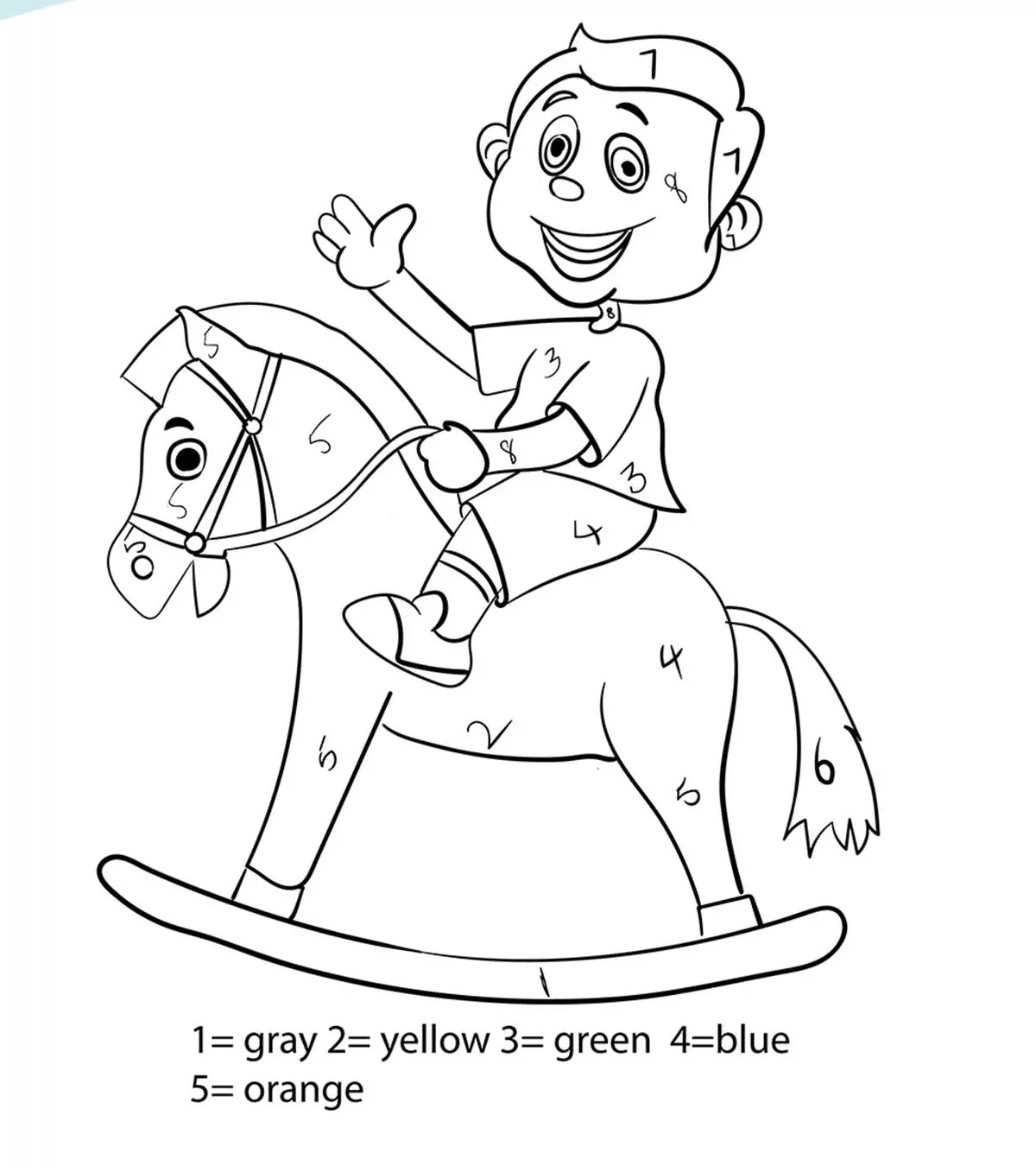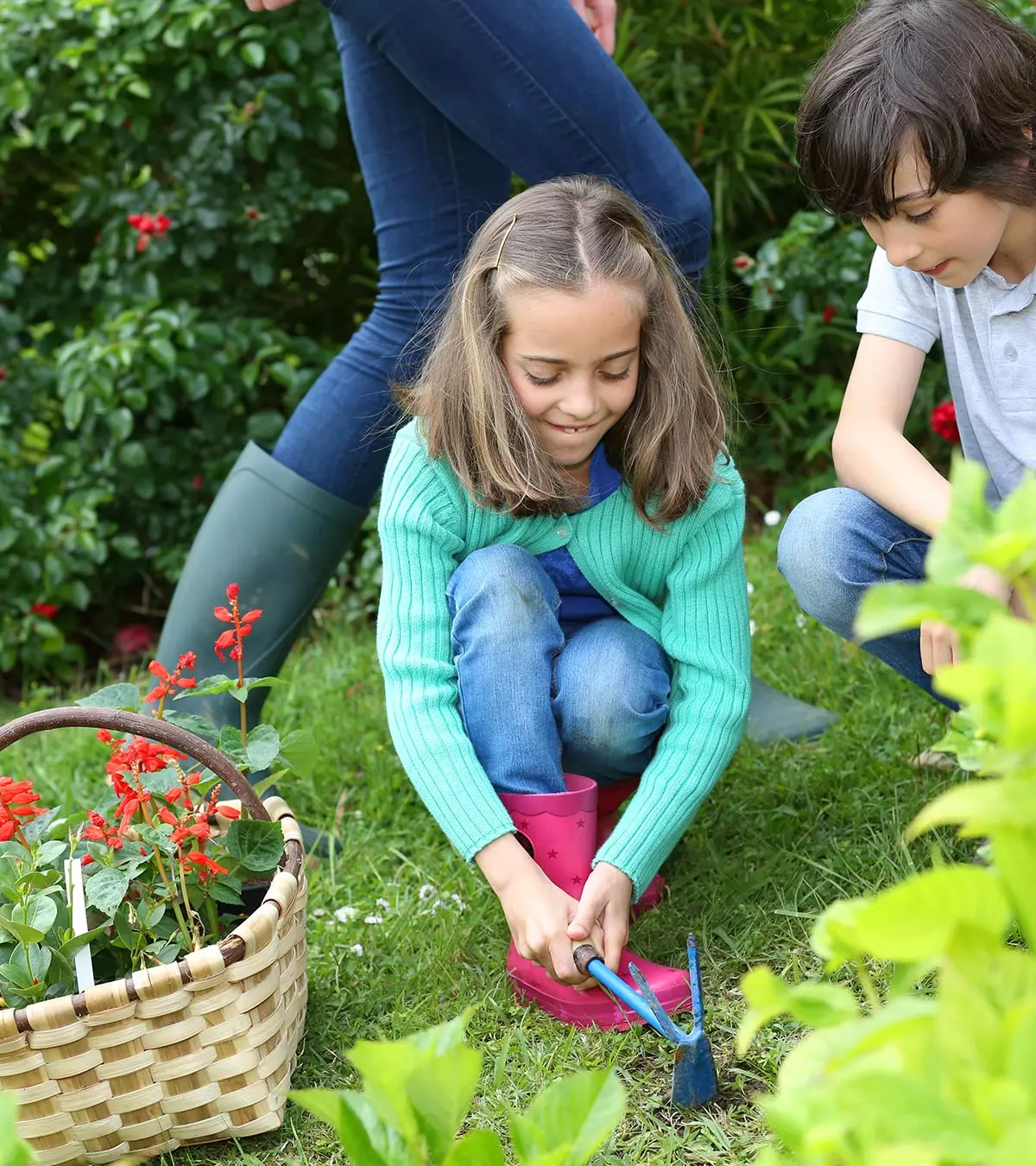
Image: Shutterstock
Gardening is a rewarding activity that teaches children several essential life skills. It keeps them close to nature, stimulates their senses, and improves their mental and physical well-being. Gardening activities provide kids with a wonderful opportunity to connect with nature, fostering a sense of responsibility and curiosity. So, here we bring you some engaging gardening activities for kids that you and your child can work on together. These activities are simple yet interesting enough to keep your child captivated. Besides, they will teach your child about the beauty of nature and how to take care of it with patience and dedication.

Key Pointers
- Gardening improves your child’s physical and mental well-being.
- Gardening helps children develop their sensory inputs.
- Maintaining a garden enhances your child’s botanical knowledge.
- Vegetable gardening teaches children the values of hard work and patience.
- Decorating the garden with painted pots fosters your child’s creativity.
Which Plants Attract Children?
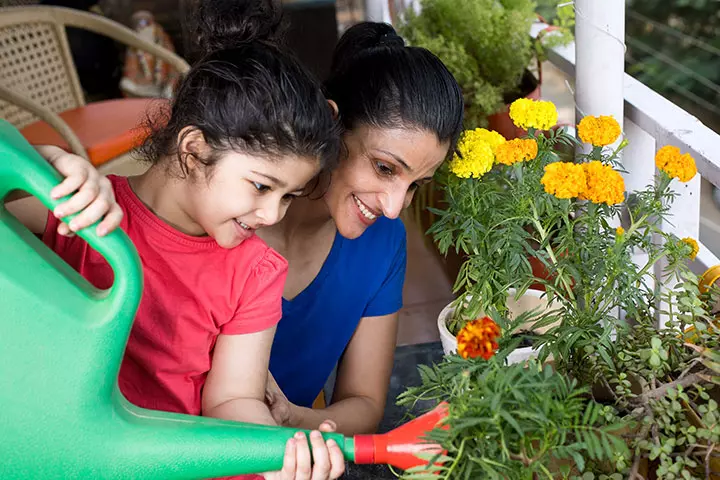
Kids usually get attracted to bright colors and big things. Also, they get bored and discouraged easily, so the first gardening experience should be fun and fruitful.
Make a kid-size garden for the little ones to handle easily. Start out with wildflowers. They are of various colors and are easily available in the market. They also look good in small colored pots.
Do be careful not to have any dangerous plants, like poison ivy, or thorny and spiny plants, like roses, yucca, cacti, pyracantha, and hollies, around wherever your child is working (1). Here are some safe choices of plants that your child can begin their gardening expedition with:
- Wild Strawberries
- Lavenders
- Sunflowers
- Cherries
Besides being fun and educational, it can help your kid develop a sensory experienceiActivities that help children develop a better understanding of the world around them by using their five senses. that will help them to connect with the world.
Your child learns to use his senses from birth. Through gardening activities, your child will quickly establish connections with the world by feeling, observing, touching, exploring, creating, and more.
Things Which Develop Sensory Inputs
Gardening is an immersive activity that engages all sensory systems. Here are some things children do during gardening that help stimulate and develop their sensory inputs (2):
- Touching plants, flowers, soil, and worms exposes children to different textures, which helps develop their tactile senses. It connects them to nature, heightening their awareness about different organisms and their role in the ecosystem.
- Looking at flowers, leaves, and seeds stimulates a child’s visual senses. It helps them learn about different colors, shapes, textures, and sizes. It also helps develop a child’s observation and critical thinking skills.
- Smelling flowers, herbs, and soil helps develop kids’ olfactory senses. It teaches them about different aromas and their origins. Smelling these natural scents can help reduce stress, elevate moods, and enhance focus.
- Harvesting and tasting home-grown produce can help develop a child’s gustatory senses. It also makes them more willing to try different kinds of foods, which helps instill healthy eating habits in them.
- Listening to the sounds of nature, such as the buzzing of bees and the chirping of birds, can help develop a child’s auditory senses. It can also help improve their ability to focus, distinguish between different sounds, and enhance their listening skills.
- Weeding, watering, and carrying pots are engaging gardening activities that develop a child’s awareness of their body’s position and movement (proprioception). They also improve a child’s motor skills, balance, coordination, and spatial awareness.
- Planting seeds, shoveling, and walking in the garden involve bending, pulling, and digging, which help develop a child’s vestibular senses. Strengthening these senses can improve a child’s core strength and coordination.
- Smelling herbs before eating and working for extended periods engage multiple senses, which helps develop a child’s ability to recognize and respond to internal sensations (interoception), such as hunger, thirst, fatigue, and changes in body temperature.
Top 12 Fun Gardening Activities For Kids
Gardening is one of the most engaging activities that can promote a sense of achievement in children. Sharing her gardening experience as a child, Louise Curley, a blogger, says, “I loved gardening when I was little. My first real gardening memory is being given a small part of my parents’ garden and spending my pocket money on alpines from my local DIY store. I would spend hours with a trowel digging, weeding and just generally messing about in the soil. I loved it, being outdoors and watching the bees and butterflies landing on the sedums I’d planted (i).”If your child is ready to develop a green thumb in the garden, here are some interesting activities for kids. Let your child pick out the best one, and don’t worry about them getting dirty or pulling out worms and plants.
1. Watering plants
It is the most basic of all gardening activities, perfect for beginners. If your little one is assisting you in the garden for the first time, this is the activity for you.
- It can be easily accomplished by children of almost all ages.
- Get your child a cute watering can. You can easily get them from any departmental store.
- Fix a time or day for watering.
2. Cleaning the garden
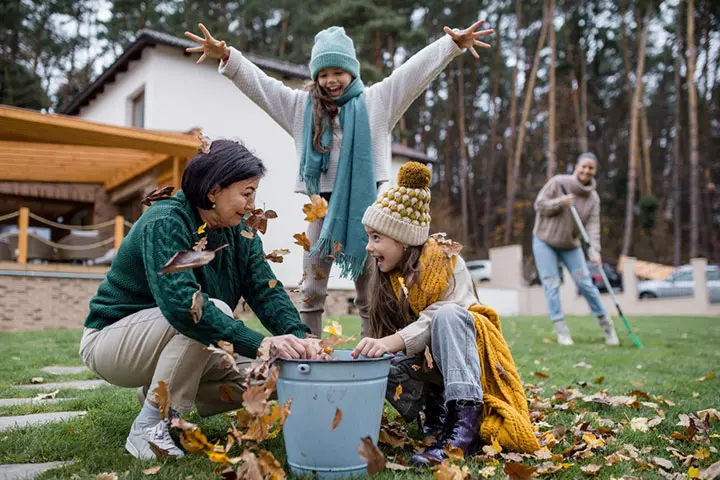
You must teach your kid to clean the garden. Take this opportunity to show them how to use a rake and deposit dry leaves in the compost pit.
- This activity will help make the surroundings hygienic and teach your child to value cleanliness.
You can buy good child rakes to remove dead leaves and flowers from the garden. It will improve their balance and develop their motor skills.
3. Pulling out weeds
Teach your child to pull out weeds from the flower beds. This is also the perfect opportunity to show them how to differentiate between invasive and useful plants.
- Weeds make the garden look dirty and deplete nutrients essential for other plants from the soil, making weeding an essential part of gardening.
- Teach your child about different types of wild plants, as well as the methods of pruning and weeding them.
4. Picking fruits or vegetables
This is one of everyone’s favorite gardening activities of all time, because it is a rewarding experience.
- Children love picking fruits and vegetables from their home garden.
- You can make them get involved in the kitchen too, to make some delicious food, pickles, or jellies.
 Be watchful
Be watchful5. Composting the soil
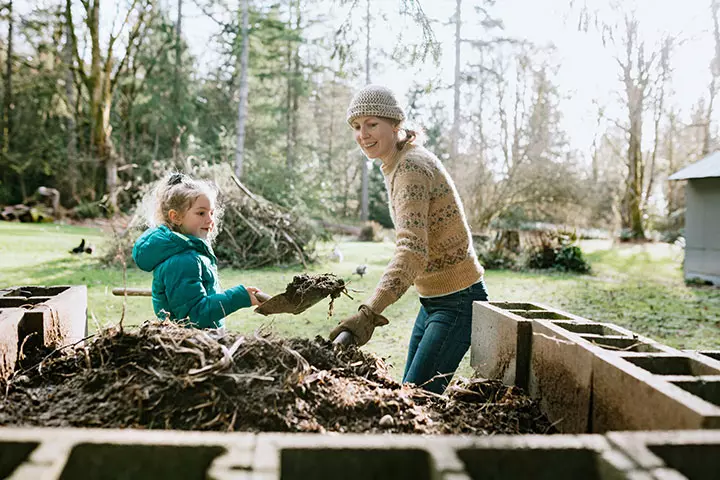
Teach your children the process of compostingiA process of recycling organic materials into nutrient-rich soil through natural decomposition. soil. Learning about composting early on will make your child environmentally conscious as they learn how to reduce their waste and repurpose it.
- Teach them the significance of rich organic soil and how compost enriches soil with nutrients.
- Tell them how good soil helps plants grow and bear fruit quickly, to encourage them to keep composting.
- Also, take this opportunity to teach them the importance of mulching.
6. Building a bird feeder
Make a bird feeder with your kid with old plastic bottles. This is a sustainable activity that will show your child how to reuse plastic waste.
- Drill holes in the bottle and hang it up with rope. Keep food for the birds, like seeds, in the bottle.
- This activity will encourage birds to visit your garden regularly and your kid too will start appreciating nature, and grow to love birds.
7. Learning about insects
Learning about insects could be one of the best spring activities for kids.
- A pair of magnifying glasses would be helpful.
- This will surely help them to get over their fear of bugs.
- It is also a good opportunity to teach kids how useful insects are in the garden and what role each has.
8. Painting the pots
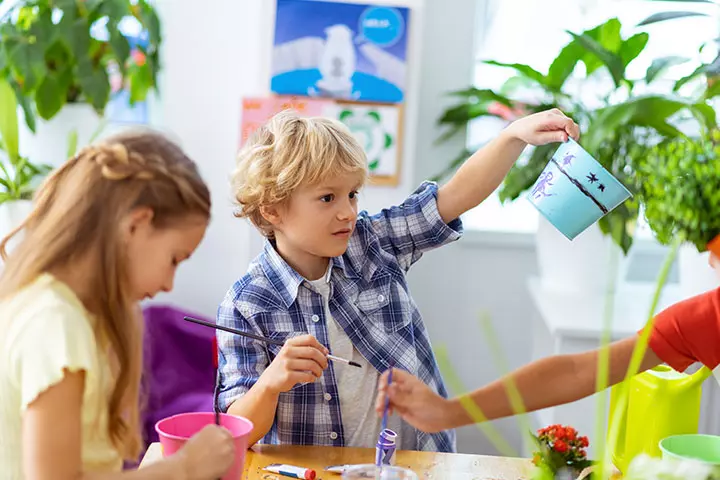
Let your child color the flower pots in the garden as an exercise in creativity.
- This will make the garden look bright and colorful.
- Engaging your child in drawing, painting and designing pots can ignite their passion for art.
9. Creating a fairy garden
Let imagination drive your kids wild. This activity is great for those who love fairy tales and whimsical things.
- Ask them to make a fairy garden with colorful pebbles, sticks, shells, twigs, moss, and pots.
- This creative activity allows children to exercise their imagination and hone their fine motor skills as they design the tiny components of the fairy garden.
10. Coloring the rocks
Color can play a great role in brightening up your garden. This is a fairly easy activity and perfect for young kids. It encourages them to explore the garden to find the perfectly sized rocks to paint.
- For the activity, give your child non-toxic paints and ask them to color various rocks.
- Let them dry and then arrange them near your flower pots.
11. Playing garden scavenger hunt
Organizing a garden scavenger hunt for kids is easy and enjoyable. It encourages them to explore, observe, and differentiate between different natural elements.
- Create a checklist with items like flowers, leaves, and insects.
- Distribute clipboards, pencils, and bags for collecting.
- Explain the rules, emphasizing respect for nature.
- Start the hunt and set a reasonable time limit.
- Kids can explore, collect, and meet at a designated point.
- Review the checklist together, discussing their findings and observations.
12. Doing garden yoga
Garden yoga for kids is a delightful outdoor activity. While it does not have much to do wih gardening, it encourages children to relax in an outdoor environment.
- Set up mats in a garden, introduce nature-inspired poses like Tree and Butterfly, and add animal-themed poses.
- Incorporate imaginative games, group activities, and a calming meditation.
- It fosters physical activity, mindfulness, and a connection to nature in a playful way.
Make Gardening More Enjoyable
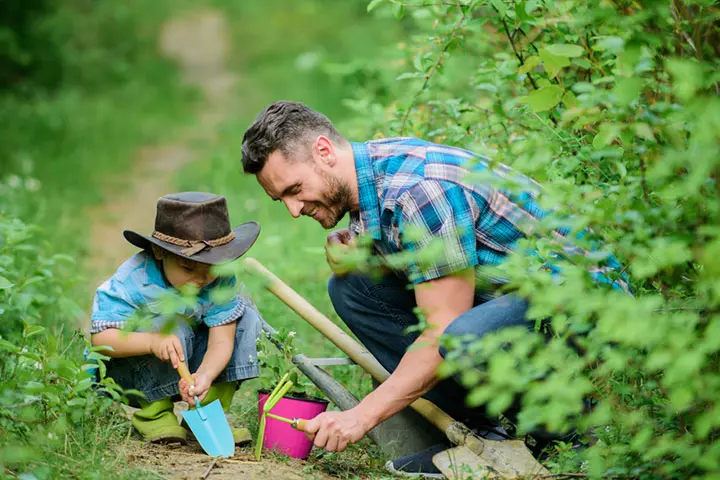
Some children might find gardening overwhelming. To help them get used to gardening and feel comfortable outdoors, you should give them small and easy tasks. Here are some other ways to help children enjoy gardening:
- Allow your children to maintain their own garden spaces by choosing plants and layouts of their choice.
- Let them also plant seeds and seedlingsiA young plant, one that grows from the seed. — you will be amazed to learn how eager they are to see the first sprout popping up from the ground.
- Allow them to explore and learn things on their own to boost their creativity and give them a sense of ownership.
- Buy kid-sized tools for your little ones.
Safety Tips For Kids’ Gardening Activities
Gardening is an excellent way to teach children about nature and develop an appreciation for all the work that goes into growing fruits, vegetables, and flowers. However, like any outdoor activity, it does come with some risks. Here are the safety practices you should follow while gardening with children (1) (3):
- Use child-friendly tools: Give your child age-appropriate gardening tools that are lightweight, have rounded edges, and are easy to handle. Also, teach them how to use and store the tools properly.
- Don’t let kids roam: Don’t let the children wander in the garden unattended. Keep them away from driveways and install fences if possible. Also, be careful around decks and stairs to prevent falling, and keep furniture away from railings as kids may climb onto them and topple over the rails.
- Wear protective clothing: Ensure children wear gloves while gardening to protect their fingers from thorns, splinters, or chemicals. Use a wide-brimmed hat, sunglasses, and sunscreen to protect them from UV rays and sunburn. Invest in some close-toed shoes or boots to save them from insect bites, sharp objects, and accidental wounds.
- Be careful around chemicals: Gardening often requires chemicals like pesticides, insecticides, and fertilizers. Keep these harsh chemicals away from children. Store them in a locked or high place, away from their reach. Ensure children wash their hands thoroughly after handling soil, plants, and gardening materials, and caution them against putting their unwashed hands in their mouths.
- Be aware of poisonous plants and insects: Some common plants, like poison ivy or foxglove, can be toxic or cause an allergic reaction upon touch. Insects like wasps or fire ants can also cause trouble. So, tell your children not to touch or taste any plant without asking. Keep a first aid kit handy in emergencies like rashes, insect bites, or minor injuries.
- Stay hydrated and take breaks: Gardening is physically demanding, so instruct your child to stay hydrated. Take breaks in shaded areas to prevent heat exhaustion and dehydration. Also, monitor them for signs of dizziness, fatigue, and overheating.
- Use manure and compost correctly: While manure is beneficial for soil, it can contain harmful pathogens. Therefore, it’s best to avoid using it around children. Keep compost bins in areas where runoff won’t come into contact with edible plants, as children often pick and eat fruits and berries directly from bushes.
- Handle water and soil safely: Ensure kids wash their hands after handling soil to prevent any bacterial infections. Use clean water for watering the plants, and avoid overwatering to prevent forming muddy and slippery surfaces where kids can slip and fall.
Frequently Asked Questions
1. What is a sensory garden for kids?
A sensory garden is designed for kids to activate and use all their senses. Such experiences help trigger neurological sensations and introduce them to new experiences (4).
2. What plants are sensory?
Examples of sensory plants include chamomile, lavender, basil, curry plant, rosemary, and aloe.
3. Why is gardening important to kids?
Gardening activities can help your child practice several skills at the same time. For example, moving from one plant to another engages locomotor skillsiThe abilities that are crucial for a child’s mobility and physical growth, including crawling, jumping, running. . Smelling and touching flowers or plants activate their senses and teach them to care about nature. Engaging in gardening can be a learning activity that teaches children responsibility, boosts their creativity, and helps build self-confidence (5).
Whether you have a child who is always glued to their screens or enjoys the outdoors, these garden activities for kids are perfect for both. Staying connected with the soil through different activities such as rock coloring, soil composting, or simply planting and watering can keep your children engaged and stimulate their senses. So go ahead and encourage your children to spend more time outside and help them make it enjoyable and easy. You never know; your little gardener might become an expert in no time.
Infographic: Different Types Of Gardening Tools For Children
Gardening can be a fun-filled activity for children. Introducing gardening to your child can be easy with safe and convenient tools. However, selecting the proper gardening tools is challenging, considering the variety of available equipment. Read through the infographic below to learn about various gardening tools for children.
Some thing wrong with infographic shortcode. please verify shortcode syntax
Illustration: Top 12 Creative Gardening Activities For Kids
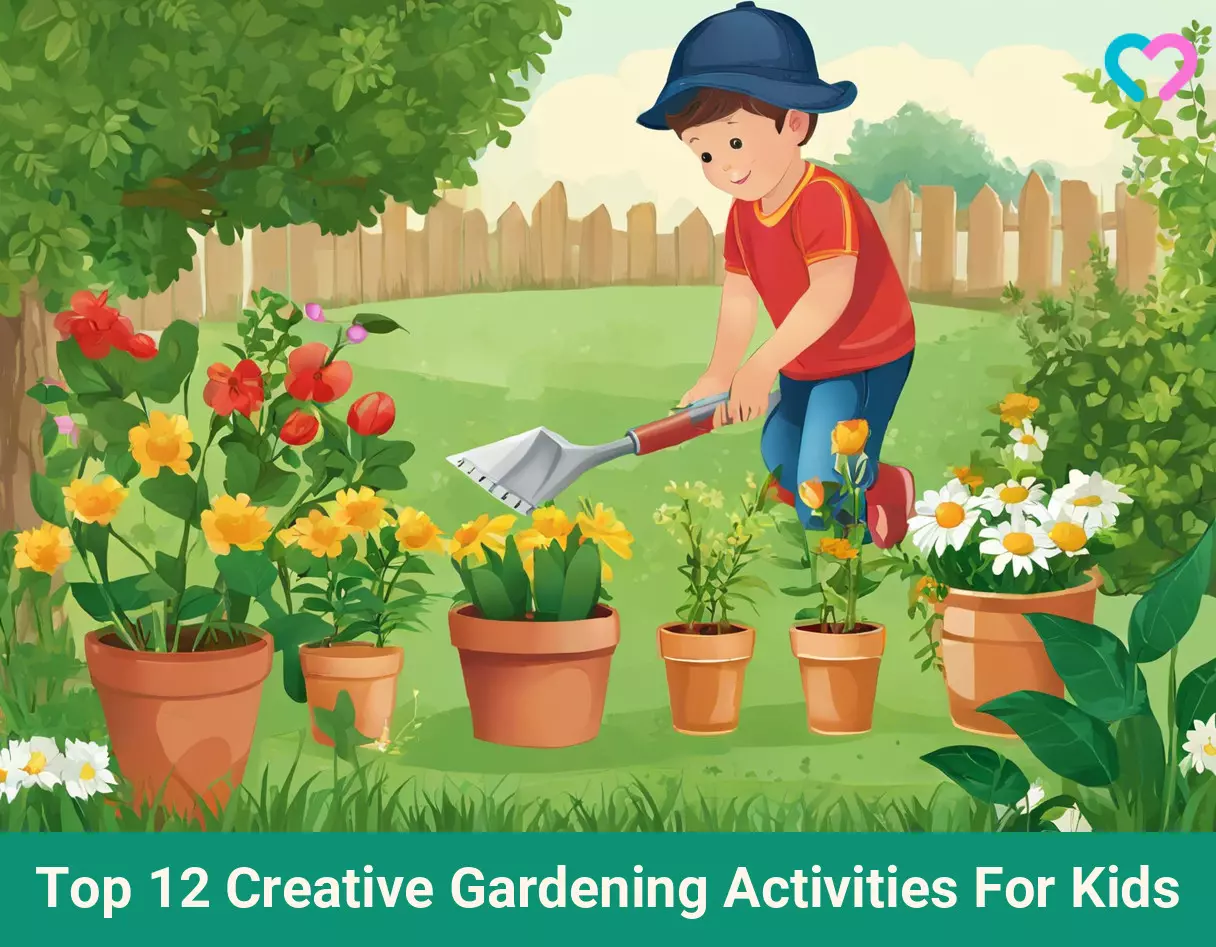
Image: Stable Diffusion/MomJunction Design Team
Explore the fun of gardening with children! Watch this video and discover how to make a captivating dinosaur garden.
Personal Experience: Source
MomJunction articles include first-hand experiences to provide you with better insights through real-life narratives. Here are the sources of personal accounts referenced in this article.
i. Gardening for kids – The campaign for school gardens;https://wellywoman.wordpress.com/2012/03/14/gardening-for-kids-the-campaign-for-school-gardens/
References
- Garden Safety with Kids.
https://extension.okstate.edu/county/ottawa/media/docs/fcs/garden-safety-with-kids.pdf - Engaging Sensory Systems in the Garden.
https://kidsgardening.org/resources/digging-deeper-engaging-sensory-systems/ - Safe Gardening Guidelines.
https://kidsgardening.org/resources/gardening-basics-safe-gardening-guidelines/ - Sensory Gardens.
https://naturalearning.org/sensory-gardens/ - Gardening for children.
https://www.betterhealth.vic.gov.au/health/healthyliving/gardening-safety
Community Experiences
Join the conversation and become a part of our nurturing community! Share your stories, experiences, and insights to connect with fellow parents.
Read full bio of Elisa Yi
Read full bio of Manjiri Kochrekar
Read full bio of Harshita Makvana
Read full bio of Nisha Bharatan









